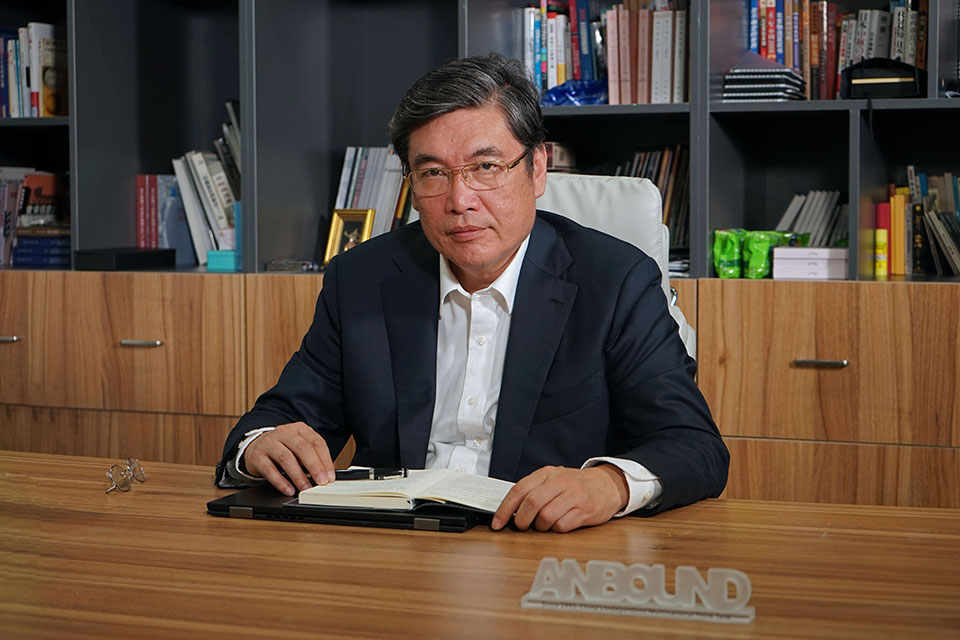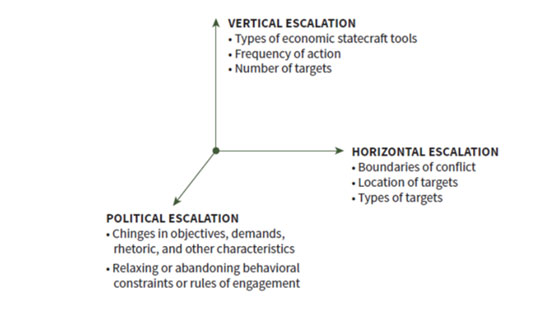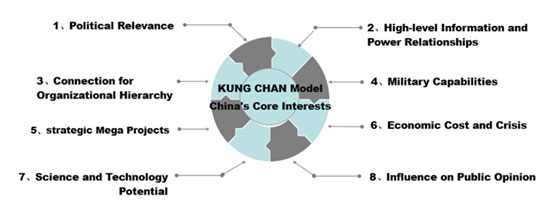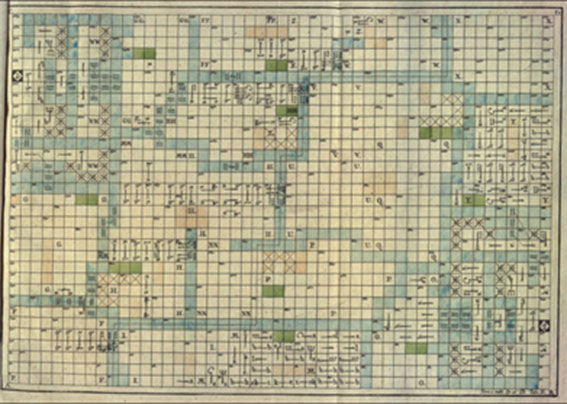Chan Kung’s Model of China’s Core Interests

Wargame is a commonly used professional method in geopolitical analysis. The main approach of this method is to conduct study and analysis through simulating the reactions of two opposing sides and discussing the possible outcomes in terms of winning or losing. Therefore, in this analysis, the definition of the model is extremely crucial. Some examples would be the tension between the United States and China. the U.S.-China trade war, the judgment of future trends etc. These are all focuses for the wargame analysis. Various countries in the world now have some model definitions for the analysis and research of wargame, such as Brookings’ analysis model. When applied to real world data however, the definitions of these models are rather limited, biased, and even out of date. Most of these model frameworks are limited to the economic category and does not conform to China’s current situation.
Figure 1: Wargame model; CSIS, Beyond the Brink: Escalation and Conflict in U.S.-China Economic Relations (Matthew P Goodman, 2019)
A structural model that conforms to actual scenarios should be able to provide a research framework that establishes boundary conditions and confines logical reasoning within the framework of the model. Most importantly, it must be able to comprehensively reflect realistic competitive scenarios in every aspect. If the data is available, then this structural model can also be adapted in quantitative analysis at any given time and provide empirical results. It should even include system dynamics to establish equations and comprehensively conduct mathematical analysis to examine and predict results.
Whenever China faces any offensive policy options, there are two points which it will consider. The first is whether core interests are involved. In geopolitics, if core interests are not involved, it is easy for China to ignore the issue and the priority given to the policy would be reduced, resulting in little obvious effects. The second is concerning which core interests are involved, and to what extent. The extent to which core interests are involved is related to the length of the chain of core interests. In a good structural model, the model itself should provide a solution to the first point. As for the second point, an accurate solution can be obtained through evaluation or quantitative analysis, so the model must also be constructed for such a condition.
The figure below shows a wargame model of China’s core interests. as created by the author.
Figure 2: “Chan Kung’s Model” on China’s core interests (Chan Kung, 2020).
The focus of this model is to deconstruct the impact on China’s overall national capabilities, including politics, intelligence, military, party and government organizations, finance and economy, and public opinion influence. The model can then be used to establish the framework, boundaries, conditions, and sensitivity for the previously mentioned areas, laying a rational and logical foundation for the reasoning and trend determination of wargame. In other words, the most important significance of this model is that it answers the question “what are China’s core interests?”
The elements that make up the model include the following parts:
“Science and Technological Potentials”: This defines the relationship between the basic competitiveness of science and technology, including the mobilization of scholars, scientific research cooperation, procurement of technical equipment, scientific and technological education, training cooperation, and other factors.
“Strategic Mega Projects”: This defines major national-level projects that require heavy funding and have far-reaching influence that surpass other projects, examples are the 863 Plan, the Belt and Road Initiative, and the Greater Bay Area project, etc.
“Political Relevance”: This defines the relationship between policy options and Chinese politics. In China, only policy options with a high political level have strong sensitivity and dominant influence. Examples include subversion of political concepts, changes in established political principles, and the impact on political images.
“Economic Costs and Crises”: This is defined as factors and policy options that may lead to economic crises and significant economic costs. Some examples are the interruption of economic and trade exchanges, punitive tariffs, trade sanctions, financial barriers, travel restrictions, exchange rate intervention and many other policy options.
“High-level Information and Power Relationship”: This is defined as the decisive information exchange and special background relationship of the state power system. Examples are specifically trusted interpersonal and external communication activities, business partnerships under certain unique backgrounds, etc.
“Connection for Organizational Hierarchy”: This is defined as the influencing factors in the organizational structure of the Chinese government. This is also related to the substantive status of government departments. Some examples are negotiating parties, declaring parties, status of ministries and agencies, etc.
“Military Capabilities”: This is defined as the impact of military advantages, including information, technology, equipment, cooperation, and regional coordination.
“Influence on Public Opinion”: This is defined as the driving influence on popular thinking, cultural as well as normal trends. Some examples that can be cited are the current pandemic, left-wing and right-wing positions, media coverage hotspots, social sensitivity, etc.
The use of models, the boundaries of analysis, and evaluation should comprehensively consider the magnitude of these model constituent elements in determining the overall impact. The structural sequence of the model reflects to a certain extent the priority and influence of China’s core interest structure, which carries a huge advantage for dominance for the adversarial policy options of wargame.
Figure 3: Johann Christian Ludwig Hellwig’s wargame, created in 1780 at Prussia.
Finally, it should be noted that the analytical method of wargame is rather complex and difficult to master, but its application has a long history. It was utilized by the Prussian army in the beginning of the 19th century, and it has since developed into a doctrine. The main difficulty of the wargame analytical method lies in the infiniteness of the scenario, the sense of scale, the reasonable realism and the complexity of the rules. The application of this model is far from being able to solve all the problems made in its analysis, but it does help to analyze and organize the complicated thought processes in the wargame analysis. Of course, this also creates the basic conditions for programming and quantification.
Bring the best of the CEOWORLD magazine's global journalism to audiences in the United States and around the world. - Add CEOWORLD magazine to your Google News feed.
Follow CEOWORLD magazine headlines on: Google News, LinkedIn, Twitter, and Facebook.
Copyright 2025 The CEOWORLD magazine. All rights reserved. This material (and any extract from it) must not be copied, redistributed or placed on any website, without CEOWORLD magazine' prior written consent. For media queries, please contact: info@ceoworld.biz











